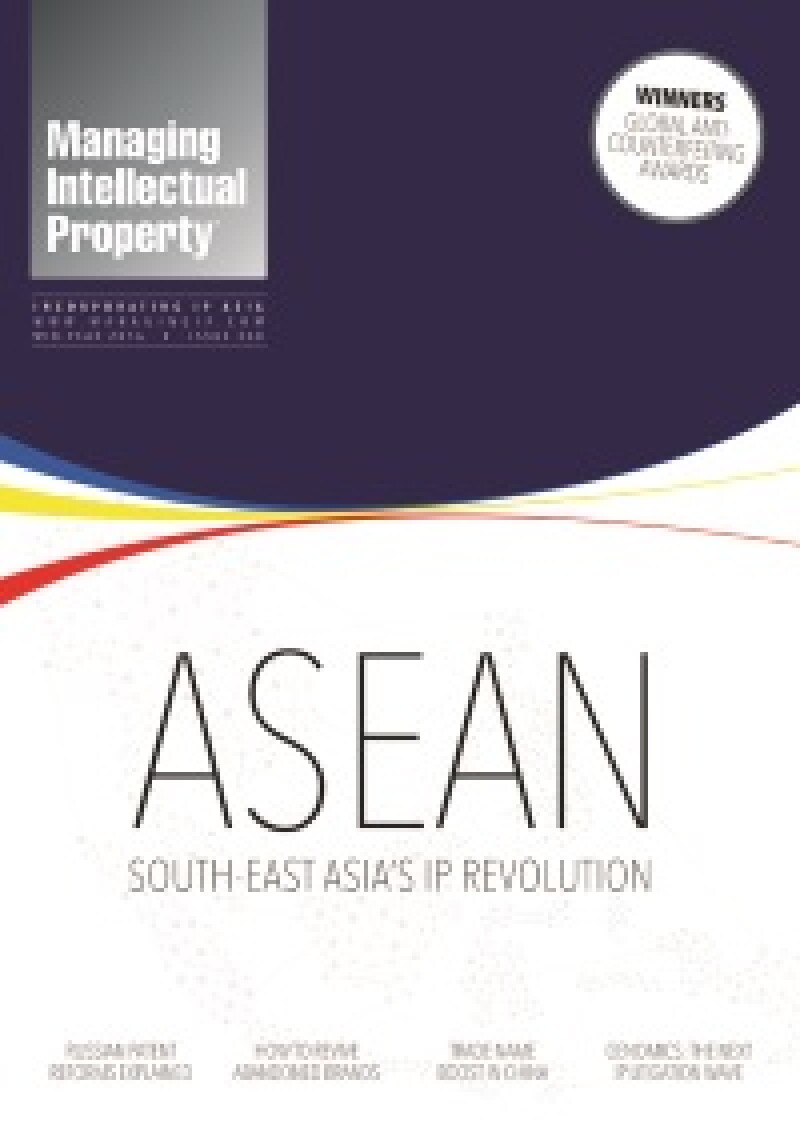
The year of ASEAN
Some people are calling this the year of ASEAN, and I found out why at the AIPPI ASEAN Regional Meeting in Kuala Lumpur earlier this year.
Last year's launch of the ASEAN Economic Community, and ambitious plans for IP reforms (including membership of international systems such as the Madrid Protocol) promise to bring new opportunities in the form of harmonisation and greater efficiency. But they also pose challenges to IP owners, not least the development of free movement of goods.
An introduction to ASEAN is the cover story in our latest issue (subscription or free trial required for full access), which also includes interviews with the heads of the IP offices of the Philippines and Malaysia. But this is just part of what will be a series of online articles and interviews over the coming year as there are further developments in this important region, which accounts for 9% of the world's population. For all the latest analysis, check and bookmark our dedicated page: managingip.com/ASEAN.
An extra big issue

There's much else for readers in our extra big mid-year issue (call it the summer special issue if you're in the northern hemisphere, or the winter special if you're in the south):
Kingsley Egbuonu reveals the winners of the 2016 Global Anti-Counterfeiting Awards held in Paris, which we were pleased to sponsor for the first time.
Tim Bamford and Karen Fong share extracts from their diaries ahead of the recent Collyer Bristow IP debate on online courts and IP litigation.
In our fifth hypothetical UPC scenario, Laura Whiting and Inmaculada Lorenzo tackle a tricky issue involving pharmaceutical patent infringement, and a potential infringer in Spain (which is outside the UPC). Remember you can read all our UPC coverage at managingip.com/UPC.
Eugene Arievich and Yuri Pylnev review the impact of recent changes to patent, utility model and design law in Russia. Look our for another article on Russia's IP Court, which will be posted online soon.
In China, Xiaopeng Zhao explains why recent court decisions on trade names are good news for overseas companies.
We have a rare contribution on Uganda, looking at a controversial High Court decision in a trade mark case. Chris Walters tries to make sense of it.
-

In the first of a series of articles by members of the MARQUES IP Outer Borders Team, Stella Syrianos, Laetitia Lagarde and Nikos Prentoulis discuss tensions between trade marks and freedom of expression, with some eye-opening examples (right).
In another branding-focused piece we ask: is it safe to bring abandoned trade marks back to life? Carrie Bradley provides a European perspective, and Tony Dylan-Hyde contrasts the position in the US.
Genomics could be the next IP litigation battleground. Dominic Adair and Annsley Merelle Ward discuss why in-house counsel need to be prepared.
The new CIPA President Tony Rollins breaks down the figures on SPCs, and examines what lessons they provide as the European Commission considers introducing a Unitary right. His analysis is particularly timely given the UK's Brexit vote, as supplementary protection for pharma products is one of the key IP issues to be resolved as the UK prepares to leave the EU (see managingip.com/Brexit for all our Brexit coverage).
Finally, in a sponsored piece, Charlotta Vink and Louise Tottie of Valea consider the latest cases on EPO practice relating to amendments under Article 123(2) EPC.

Plus read our diarist John of Utynam on the recent INTA Annual Meeting in Orlando, and find out about the latest developments in IP in countries from Argentina to Vietnam in our international briefings (sponsored; free access). Read more about the latest issue at managingip.com/Latest-Issue.html and sign up here for a free trial for full access for seven days.
The next issue will be distributed to subscribers on paper at the beginning of September, but remember you can read all the articles first on managingip.com before then.










